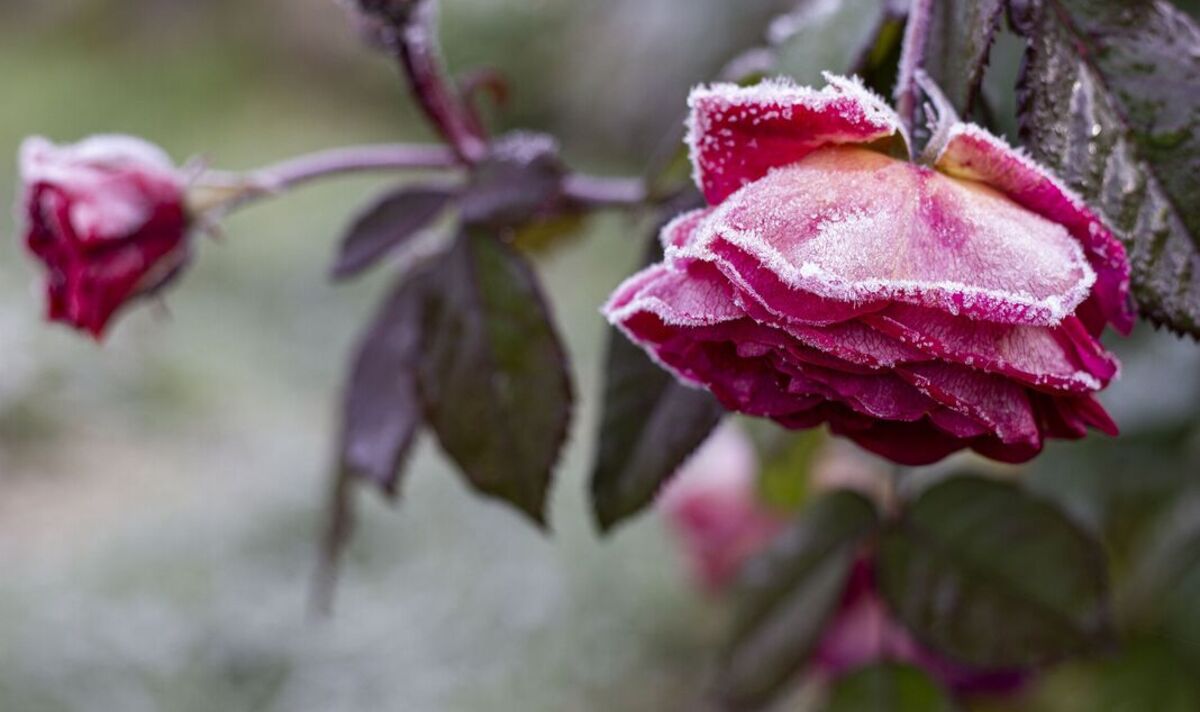Alan Titchmarsh gives advice on growing shrub roses
It is almost the beginning of autumn which means many gardeners can look forward to putting down their watering cans as more rainy weather can be expected as the nights get darker and temperatures get cooler.
However, this also means that gardeners must be on the lookout for a fungal disease called black spot, which is one of the most serious diseases found in roses and will look like black or purple marks on rose leaves.
This disease can make roses look repulsive, make these flowers very vulnerable to other diseases and make it difficult for them to survive in winter. If left untreated, it will cause rose plant leaves to shed and make it difficult for any roses to flower again.
Black spot disease is highly infectious at this time of the year as it thrives in both wet and cold weather. It also spreads through infected leaves, which are more susceptible to fall on autumn.
Many gardeners are unaware of how black spot disease spreads, and many people who are now dealing with this fungal infection have they “wish they knew sooner” on how to prevent black spot from reaching their roses. On TikTok, one upset gardener wrote: “I wish I knew what black spot was a few weeks ago because now all my plants are almost dead.”
READ MORE: Roses will bloom bigger next year if gardeners learn proper deadheading method
How to prevent black spot disease
Luckily, television gardener and horticulturist David Domoney has explained how to prevent black spot disease from ruining your roses and preventing it from infecting the rest of your garden.
In a video online, David said: “Black spots on your roses are a real problem. They are those black marks which you can see on some of the leaves. But guess what? It spreads when it rains because it’s aquatically spread.
So if you have got a bit of black spot on one of these upper leaves, the rain hits it and that carries it down the next leaf, and the next leaf and then the next leaf. It spreads throughout your bushes itself.”
In order to prevent black spot disease, David said that any leaves you suspect of having black marks on them should immediately be pruned and disposed of correctly.
He said: “The secret is when you see a black spot, pull off the leaf that is infected, but don’t compost it, get it into an incinerator and burn it or put it in your council bin, just get it well away from your garden.”
Roses should be checked regularly during autumn for signs of black spot disease, and gardeners should make sure the plant is drying quickly after it rains. David said: “You want the plant to dry after rain because the rain falls on it and stays on the plant, in speeds some other fungus like mildew or rust and the like.”
Don’t miss…
Roses bloom ‘amazingly’ with ‘easy’ homemade fertiliser – and it ‘costs nothing’[LATEST]
Revive roses easily by properly pruning them to get more beautiful blooms[REVEAL ]
September is ‘perfect’ for ‘deadheading roses’ – all the tasks to do this month[INSIGHT ]
We use your sign-up to provide content in ways you’ve consented to and to improve our understanding of you. This may include adverts from us and 3rd parties based on our understanding. You can unsubscribe at any time. More info
@daviddomoney Black spot, or Diplocarpon rosae is a very common fungal disease that can affect most types of roses. The fungus infects the leaves and can weaken the plant’s growth. So, how do you stop the spread of rose black spot? #rose #roses #rosecare #rosecaretips #plants #plants #flowers #flower #garden #gardens #gardening #plants #howto #plants #plant #advice #gardeners #gardeningtips #planthealth #blackspot #gardentok ♬ original sound – David Domoney
How to prune a rosebush to prevent black spot disease
However, the best way to ensure you never deal with black spot disease in your garden is to make sure roses are properly taken care of and pruned regularly.
Rose bushes becoming tangled and overcrowded is one of the most common ways black spot disease can spread, but David had an easy way to keep help any roses bushes which need a trim.
David explained: “If you have a plant that hasn’t been properly pruned it’s very dense in the middle, so when you do prune, look for a winehouse effect. No crossing branches in the middle so the air can flow right through it.
It’s the same as if you have too many leaves. Too many branches can’t reach the sun.
“Reach into the middle of the bush and remove some of the foliage there to make an open effect because your rose flowers are on the outside so make sure it’s not too congested, that way the plant will dry out and cut down in the fungus.”
Follow Daily Express US on Facebook and Twitter @ExpressUSNews
Source: Read Full Article


